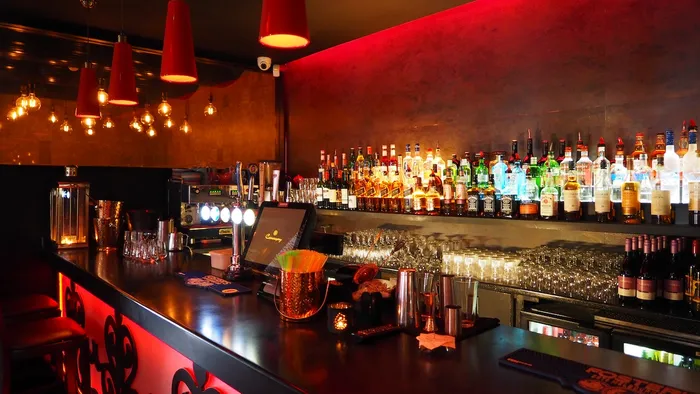The UK drinks sector reacts to changes in alcohol duty

On 1 August the UK’s new alcohol tax system came into effect.
Alcoholic drinks are now classed into four categories - beer, cider & perry, wine & wine-made and spirits – with the taxation directly relating to the strength (ABV) of the product.
.png)
As the new tax came into effect, Carlsberg announced a reduction in the strength of its flagship beer from 3.8% to 3.4% to meet the lower duty threshold, with a spokesperson commenting that the move would allow it “to invest in innovations and our portfolio of well-loved ales and lagers.”
Drinks industry expert Gareth Jones comments: “The sudden cut in ABV of Carlsberg suggests alcohol levels will fall again in beer as brewers see duty savings as an easier route to profit than another round of negotiations with the retailers.
“The duty difference between retail and pubs caused by the draught relief is unlikely to change consumers' minds on where to drink but hopefully will offer some much-needed profit to pub owners.
“Unfortunately, the brewers’ disproportionate price increases to the on-trade - plus new service charges, such as keg handling fees from Heineken - make it likely the brewers will be eyeing the draught relief when they set their next price increase (again, to avoid a dispute with the retailers). In the UK drinks industry, the balance of power sits firmly with retailers.”
The changes have been met with mixed reactions from the drinks retail and hospitality sectors, with many in the industry decrying the perceived stigmatisation of higher-alcohol drinks. The lower taxation for some key product categories are also thought to be unlikely to translate to better prices for customers.
Patrick Fisher, Market Analyst, IWSR comments: “Though some categories, such as sparkling wines, liqueurs and RTDs, may appear to benefit from lower duty rates, it is far from certain that this will translate into lower prices for consumers, given that producers and suppliers have for some time been grappling with higher raw material, energy, distribution and labour costs and consequently are now almost universally anxious to restore their margins.
“In addition to higher prices, which are likely to suppress demand further at a time when many categories are already suffering due to the current cost of living crisis, the other most tangible effect of the changes is that they may encourage the introduction of lower alcohol products. Indeed, many brewers have already opted to reduce the ABV of their beers, rather than implement unpalatable price increases in an already difficult marketplace. Many wine producers are also looking at options to reduce the ABV of their products, rather than simply foisting higher prices on increasingly price-sensitive shoppers.
“Sales of still wine are already in their third year of decline since their pandemic peak and the impact of the duty changes looks set to hit cheaper still and fortified wines the hardest, while premium products should remain more resilient. White and rosé wines also look set to continue to increase their share of overall sales, at the expense of higher ABV red wines.”
Many have also expressed concerns for the UK’s many craft distilleries and independent spirit brands, with Alan Powell, Co-Ordinator for the British Distillers Alliance, commenting: "For products of a strength of 22% alcohol by volume or more, no material change since all alcohol products will continue pay the highest rate of duty. Whisky makers, gin and vodka producers all have legal minimal strengths so cannot be sold legally “under strength” as whisky, gin etc.
"Spirits that are to be used to make RTDs at very low strength (up to 3.4% abv) will attract much lower rate of duty and puts spirits on the same footing as most other alcohol products. The same thing applies in the next two duty bands (except beer in the “mid-strength” band has lower rate but the difference is less marked than hitherto). So spirits producers could make RTDs of “typical” strengths (eg 8%; 11% abv etc) that would attract lower duty rates than in the upper band. And equal to the duty on other alcohol, products, which is fairer.
"The elephant in the room is the fact that there is no small producer relief for spirits above 8.5% which means no reduced rates for full strength-strength products, which have the cachet as the “main” brands. This puts SME independent and “craft” producers at a disadvantage compared to eg beer and cider makers and provides no support in terms of cost of production for such spirits producers, particularly as spirits of 22% abv or above attract the highest duty rate and when the Chancellor has put up duty overall by 10%."
On how the change might be felt by UK consumers, Powell concluded: "There may be a wider choice of products at lower duty strengths and as products are innovated. Overall, though, the tax has to be paid by the producer and in theory passed on to the final consumer. The extent to which the tax can be passed on in part or in full depends on economic factors. If the producer has to pass on the tax, the consumer will feel it as an inherent price increase and via mark-ups. It may be that choice becomes lessened as only key/main brands are made available."
The Pub Show returns to ExCeL London on 25-27 March 2024 with an exciting new partnership with the British Institute of Innkeeping, where visitors will have the opportunity to hear from a range of industry leaders in the pub & bar sector and have their questions answered as part of Helpline Live.
)
)
)
)
)
)
)
)
)
)
)
)
)
)
)
)
)
)
)
)
)
)
)